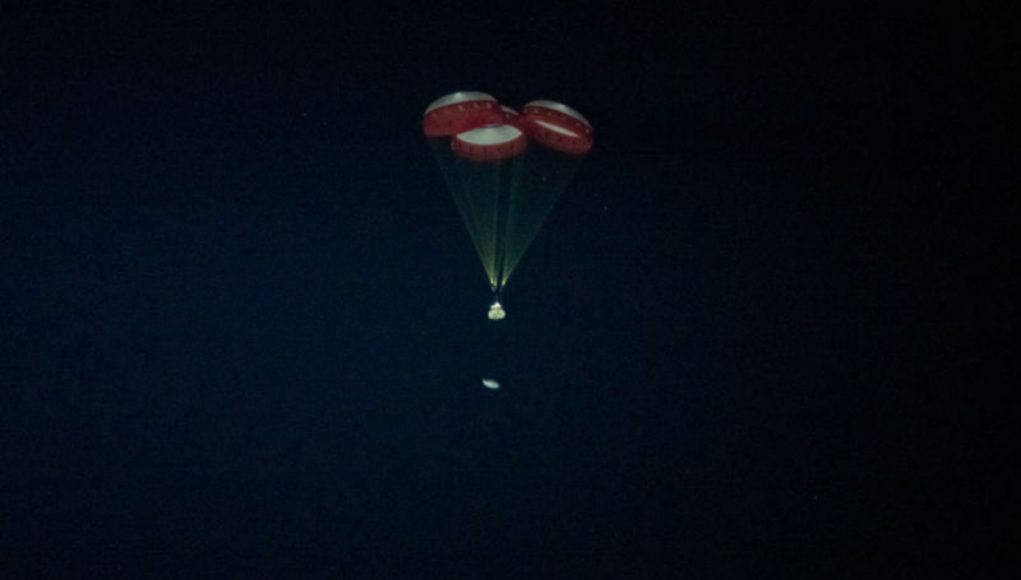Boeing has hit the brakes on its Starliner spacecraft launch, scheduled for July 21, due to some serious issues that have been discovered with the vehicle. Mark Nappi, the vice president and program manager for Starliner, revealed that two problems were discovered before Memorial Day weekend and that the company spent the holiday investigating them. After internal discussions, the decision was made to delay the test flight that would carry NASA astronauts Suni Williams and Butch Wilmore to the International Space Station. “Safety is always our top priority, and that drives this decision,” Nappi said during a teleconference with reporters.
The issues are rather serious, considering they were discovered just weeks before Starliner was due to launch on an Atlas V rocket. The first issue involves “soft links” in the lines that run from Starliner to its parachutes. During a normal flight, these substandard links would not be an issue. But Starliner’s parachute system is designed to land a crew safely in case one of the three parachutes fails. However, due to the lower failure load limit with these soft links, if one parachute fails, it’s possible the lines between the spacecraft and its remaining two parachutes would snap due to the extra strain. The second issue involves P-213 glass cloth tape that is wrapped around wiring harnesses throughout the vehicle. During recent tests, it was discovered that under certain circumstances possible in flight, this tape is flammable.
Boeing will spend the next few weeks diving deeper into these issues and identifying a path forward to address these and other problems. Most likely, Starliner will see another significant delay in this test flight. These new problems are likely to ratchet up concerns from outside observers about the safety culture at Boeing. Last week, NASA’s Aerospace Safety Advisory Panel urged NASA to bring in independent experts to assess the viability of Starliner.
The Commercial Crew program is being funded through a fixed-price contract. Boeing received a $4.2 billion award from NASA in 2014, but due to ongoing delays, Boeing has already taken cumulative charges of $900 million against its earnings. Nappi said Thursday that it is too early to say if these issues will result in additional financial charges to the program. Questions have been raised about whether Boeing will remain committed to the Starliner program, which is already a money loser. The company is contracted to fly six missions for NASA after certification of the Starliner vehicle, which will only occur after the crewed flight test. Asked if Boeing officials had any discussions about pulling out of the commercial crew program, Nappi replied: “Not serious discussions about that.”
On Sunday, December 20th, 2020, Boeing disclosed two major problems with its upcoming aerospace vehicle, the Starliner. The issues were identified only hours before the vehicle was due to launch from Cape Canaveral Air Force Station.
These issues put into question the success of the launch, as well as underscoring the problems with risk management and regular safety protocols.
The first issue was with the clock on the spacecraft. Boeing found that it was set incorrectly and might affect the spacecraft’s ability to return to Earth. Specifically, the timing for an orbital insertion burn which helps the spacecraft return back to Earth was incorrect.
The second issue was with third-party software on the spacecraft. This software operates to ensure that the spacecraft enters the correct orbit. If the software functioned as planned, the mission was deemed as a success. However, due to a coding issue, the software malfunctioned and could put the mission at risk. A team composed of software engineers and coding experts had to be assembled by Boeing to inspect and correct the issue before launch.
Ultimately, the mission was scrubbed, which gave Boeing more time to address and fix these issues. These two examples once again prove the importance of a thorough risk management and safety assessment before any launch. Such assessments should provide teams with time to manage risks, and if necessary, provide access to experts and resources in real-time.
Going forward, the greater aerospace industry should take cues from this incident and develop a standard procedure to reduce the inherent risk with space travel. This incident highlights the importance for all spacecraft companies and engineers to correctly and carefully examine all facets of their proposed mission. Moreover, as a larger global aerospace industry, we must accept the burden of responsibility to provide a safe environment for space exploration and travel.




















